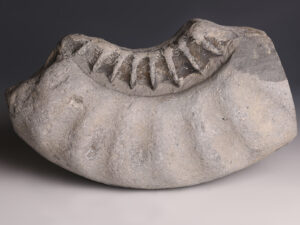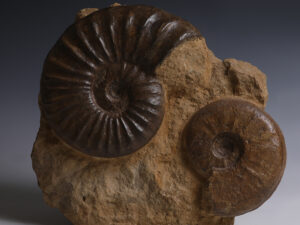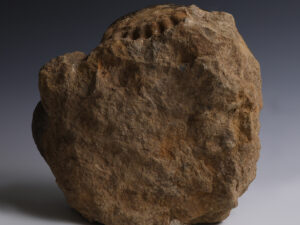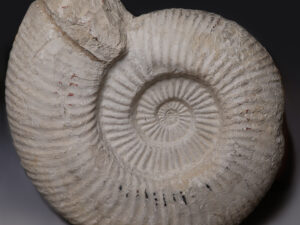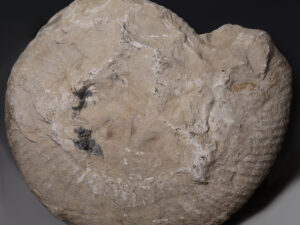Both Bivalves and Ammonites are both part of the Mollusk phylum. However, Bivalves still exist today – like clams, oysters and scallops. Ammonites became extinct around 66 million years ago, first appearing around 450 million years ago. Ammonites became extinct at the same time as the dinosaurs, in a mass extinction believed to have been caused by an asteroid collision.
Ammonites are part of the cephalopod family, along with Nautiloids and Coleoids (which include squid and octopuses). Although Ammonites look similar to Nautiloids, both species inhabit a coiled shell, they are actually believed to be more closely related to Coleoids. Ammonites were born with one tiny shell and built new chambers as they grew. They would have moved into the new chamber, sealing off the older, smaller chambers with walls known as septa.



